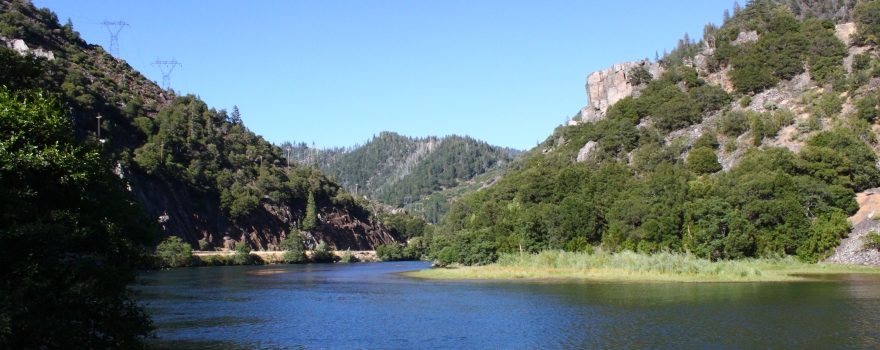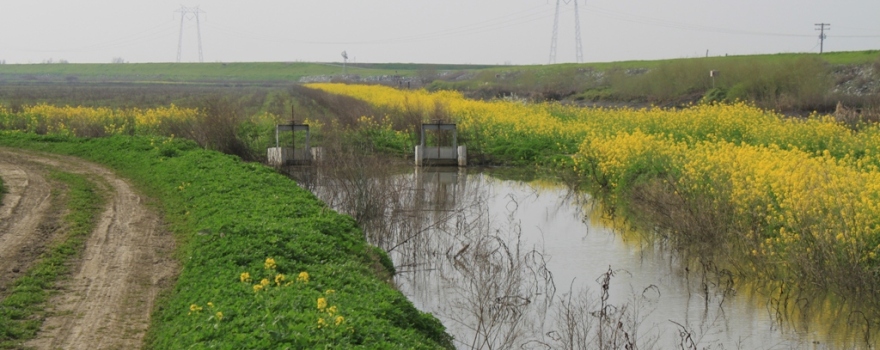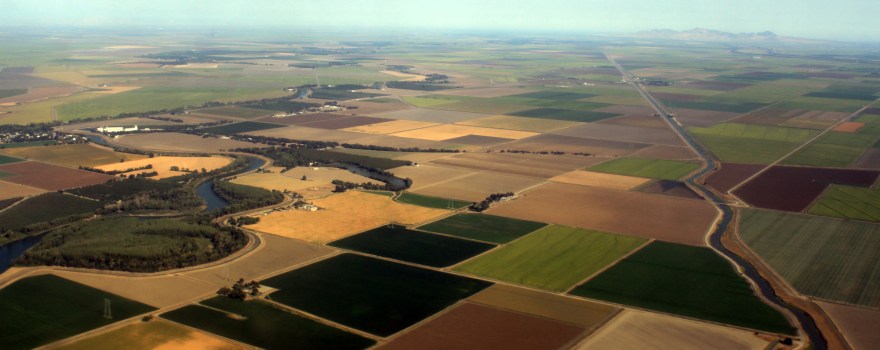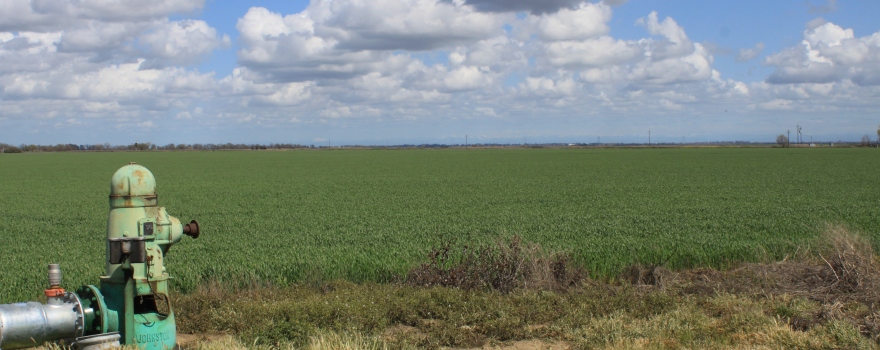The Northern California Water Association Annual Meeting was held on March 5, 2021. The theme was ‘Ridgetop to River Mouth Water Management.’ For the opening session, Thad Bettner facilitated a discussion between Natural Resources Secretary Wade Crowfoot and Deputy Secretary and Special Counsel for Water Policy at Cal EPA Kristin Peer, who works closely with Secretary Blumenfeld and the State Water Board and the Regional Water boards on all things water. Their discussion began with watershed management, then the voluntary agreements, and concluded with the Newsom Administration’s big vision.
Multi-benefit projects and watershed management
Thad Bettner noted that the theme of ‘Ridgetop to River Mouth’ fits with many of the Newsom Administration’s priorities as reflected in the Water Resilience Portfolio and the 2021 budget, which includes funding for forest health, floodplain restoration, and groundwater management. He asked them to share their vision and thoughts on multi-benefit water management and how local and regional agencies can work with the state to advance some of these important efforts.
Secretary Wade Crowfoot praised the work underway in the Sacramento Valley, noting that they have taken a holistic vision of the water system and figuring out how to improve environmental management in a manner that actually improves water reliability.
“As you point out, it starts in our forested watershed where the snow and the rain falls and makes its way out ultimately to the ocean, serving our economy, our communities, and the environment in between,” he said.

“From our perspective, the Governor’s Water Resilience Portfolio takes an all-of-the-above approach on managing, improving, restoring, and stabilizing these systems. We know it’s not just about water supply; it’s about environmental management and so many other things. That’s where these multi-benefit projects come in. You all deserve a lot of credit for elevating the use of multi-benefit floodplains as an example of how we can reduce downstream flood safety risks, improve our groundwater aquifers in some cases, and create habitat in a way that will keep our fish healthy. And we know if our fish are healthy and avoid falling into that endangered species status, we’re going to have a more stable reliable water system.”
Secretary Crowfoot said there are many examples of this, but one area he is most excited to see progress on is building the connection between water agencies and forest management. He noted that Northern California Water Association member agencies, such as Yuba Water Agency and Placer County Water Agency, are investing their resources in maintaining and restoring the health of forested watersheds because they know that’s going to protect the water quality and quantity that they deliver to their customers.
“I’d like to see us figure out a way to amplify that type of leadership not only across the Sacramento River Valley but across the state so that we’re taking care of our water systems by taking care of our forests.”
Kristen Peer noted the dramatic impacts to the state’s water systems due to both the pandemic and the unprecedented wildfires, which burned more than 4 million acres across the state.
“Early on in the pandemic, the governor issued a moratorium on water shut-offs for people’s inability to pay their water bills,” she said. “The State Water Board looked into that recently. We knew there would be impacts from that, but when the executive order was signed, nobody had any concept of how long the pandemic would take to clear up. We looked at some data, and we have an estimated $1 billion in total household debt across the state as of January, and that continues to grow. That means that at least 1.6 million households in California have water debt which is approximately 12% of households throughout the state.”
“The pandemic’s impacts are also being felt at the system level. So a lot of small water systems that were already vulnerable and don’t have the capacity and never did have the capacity are hit with the shock and are less able to manage for that. We’re working now on how we’re going to manage coming out of the pandemic so that these don’t continue to be ongoing impacts that we’re dealing with.”
“We all know wildfires have significant impacts on watersheds, and post-fire storm systems are devastating. These post-fire storm systems can bring sediments and debris and sometimes hazardous materials into our reservoirs and our surface waters. All of this is to say that we will need multi-benefit restoration projects now more than ever, and it takes an all-of-the-above strategy. We need everybody involved.”
Ms. Peer noted that there are opportunities where NCWA and others could get involved. “One is a spatial analysis to help us prioritize in the Oroville, Shasta, and Trinity watersheds. Cal EPA and the Resources Agency are currently developing that tool, which will help us identify the priority areas for restoration projects going forward. There’s going to be outreach in the near future on how stakeholders can get involved in that process. And we would welcome the expertise of the NCWA agencies in that.”
“Another area is the State Water Board is working closely with the Department of Fish and Wildlife and Sustainable Conservation to develop a general restoration permit that would cover large restoration projects. That would include mitigation projects, voluntary restoration projects, and potentially even mitigation that could be included with the voluntary agreements. And so that is anticipated to be coming out later this spring, and hopefully, we’ll have in place adopted an order by the end of the year. So a lot is going on in this space, and we really would welcome the engagement of your member agencies in all of it.”
The increasing likelihood of a dry year
Thad Bettner noted that during the 2014-2015 drought, NCWA agencies worked with state agencies to manage the system. He noted that NCWA has a Dry Year Task Force looking at potential actions to take. “As you look forward to the rest of the year, what are some of your initial thoughts on how we can be working together to get through a drought if it still remains dry?”
Secretary Crowfoot said it’s fairly clear that it will be a dry or critically dry water year, on top of last year, which also was a challenging water year. “We’ve been coordinating across agencies for the last few months and preparing ourselves for the second dry year. And that means any number of things, including what administrative actions we’ll need to take to allow, for example, reservoirs to keep water in storage for later in the year.”
“One benefit of coming out of the epic drought of the middle part of the last decade was that a lot of us were here for that and managed our way through it with partnerships with water agencies. So I think in terms of working together, we’ll continue to rely on two-way communication and be very nimble around how we manage our system and what types of flexibilities we might be able to exercise. We’re working on how we can make water transfers more nimble than they’ve been in the past, and the Department of Water Resources has made some strong improvements there. And then how we can make decisions in real-time regarding environmental management. We need to protect these endangered species while maximizing the use of water for supply. I will say at the same time, we have to keep our eyes on the prize, which is building resilience over the long term.”
Secretary Crowfoot pointed out that the Governor’s proposed budget calls for more funding for local assistance for sustainable groundwater management (or SGMA). “We’re going to continue to need to allow SGMA to be implemented by local agencies, even as we contend with the current year, and we’re going to continue to build more habitat, using about $175 million of Prop 68 funding in partnership with NCWA agencies over the next few years.”
He noted that if conditions stay dry and there are similar impacts as in the last drought, they will likely pull together in a task force or a multi-agency group that will allow for participation from water agencies.
Kristin Peer pointed out that there were significant impacts to salmon from the last drought and mortality events in the Sacramento River. “So temperature management is forefront, and all indications are looking like this year is going to be dry and potentially drought year. So early planning is really important, and these next couple of months are going to be crucial to making sure that the right management decisions are made to protect the temperatures coming out of Shasta and going into the Sacramento River.”
“In the past, NCWA agencies have been really helpful in developing the plan and also developing voluntary actions that can be taken to ameliorate some of the most significant impacts to temperature, and we’d welcome that type of interaction again this year. Certainly, these next couple of months are going to be critical. The draft temperature management plan comes to the State Water Board from the Bureau of Reclamation, usually in mid-April, and then the EIS is finalized in late May. So again, now is the time to kind of start looking at that and figuring out how we’re going to manage it.”
Voluntary agreements
Mr. Bettner noted that both Secretary Crowfoot and Ms. Peer are involved in the voluntary agreement discussions, albeit from different perspectives. What are your insights on where voluntary agreements stand, and how are your agencies approaching them?
Secretary Crowfoot said they are all working together across agencies in a new and different way. “Early on in a cabinet meeting, Governor Newsom came in, looked at us all, and said, ‘Look, I understand that you get treated as pretty important people in Sacramento, but very few people outside of state government actually know what each of your agencies does. And what they care about is, are you getting stuff done for California?’”
“Historically, and naturally, in big government, there can be these institutional tensions and sort of turf between departments or agencies. We’ve worked hard to break down some of those inherent tensions among our different missions within state government. We have what’s called a ‘One State Water Team.’ We frequently meet with Kristin and Jared [Blumenfeld, Chair of Cal EPA] and Joaquin [Esquivel, Chair of the State Water Board] and Eileen [Sobeck, Executive Officer] at the Water Board, and Chuck [Bonham, Director of Fish & Wildlife] and Karla [Nemeth, Director of the Department of Water Resources]. That doesn’t mean we don’t have different perspectives or we don’t have different obligations. But we work to really problem solve and make decisions as an administration. A good example of that was the Water Resilience Portfolio.”
 “On the voluntary agreements, I think there used to be a perception that DWR and Fish and Wildlife were one team working with the water contractors, and they threw something over the transom to the water board for the water board to consider quietly in a black box. That was the stereotype. I think we’ve put that on its head. What we worked for the first year to do is bring all of the parties together in a plenary session that met on a bi-weekly basis for almost an entire year, and to develop these voluntary agreements to enable the water board to do what it’s mandated to do by state and federal law, which is update the water quality plan.”
“On the voluntary agreements, I think there used to be a perception that DWR and Fish and Wildlife were one team working with the water contractors, and they threw something over the transom to the water board for the water board to consider quietly in a black box. That was the stereotype. I think we’ve put that on its head. What we worked for the first year to do is bring all of the parties together in a plenary session that met on a bi-weekly basis for almost an entire year, and to develop these voluntary agreements to enable the water board to do what it’s mandated to do by state and federal law, which is update the water quality plan.”
“We know that the Water Board has to do this,” continued Secretary Crowfoot. “So our focus is to develop a package that’s workable for water agencies, state and federal agencies, and for environmental conservation groups that will protect those beneficial uses more quickly than the traditional process of regulations and water rights adjudication litigation. And so we continue to think a voluntary agreement or set of agreements is a win-win-win. We’re not agnostic on actually whether we want to achieve a voluntary set of voluntary agreements – we very much do. The complexity and the time that we’ve taken is we need to ensure that the program of implementation, including the flows and the habitat, actually is scientifically adequate, and therefore legally adequate.”
“The voluntary agreement once produced will go through a blind scientific peer review, where objective scientists that know nothing about the politics of California water are going to review it for its adequacy. It’s going to go through a CEQA process and, ultimately, through public analysis and hearings at the State Water Board. As champions of the voluntary agreements, we want to make sure that those agreements are an adequate program of implementation.”
“We know that the voluntary agreements will be challenged legally, and so all the work we’ve been doing is to ensure that we can collectively identify the assets – the flow, the habitat, the management, and the science that’s going to meet the bar that federal and state law sets for the Water Board.”
“Over 2020, we were stymied by some pretty significant differences with the Trump administration as it relates to the protection of endangered species, and those legal differences halted our progress,” said Secretary Crowfoot. “The good news is that the new administration has made it very clear that they want to roll up the sleeves, work with us, explore how we resolve those legal differences and get back around the table on the voluntary agreements. The water agencies have been hard at work in recent months working on the voluntary agreement framework (or something similar to it) to present to the Water Board.”
“I’m very bullish, actually, right now,” he continued. “I know the Governor wants to get this done because I hear from him quite regularly asking for status updates. We’re doing the good work with water agencies and other stakeholders really identifying what assets are needed, ultimately, to flow into that set of agreements and ultimately be analyzed and presented to the Water Board.”
 “I would add that this is something that the State Water Board is also quite supportive of, and hopefully we’ll succeed because the improvements can get into the system much more efficiently and effectively,” said Kristen Peer. “It can be a suite of assets – it’s flow, habitat, funding. It’s the whole system working together. Those things are either difficult or impossible for the Water Board to regulate because they have limited authority. So they recognize the benefits of the VAs and are hopeful that we will succeed in bringing them a package that is scientifically and legally adequate, which is what we are aiming to do.”
“I would add that this is something that the State Water Board is also quite supportive of, and hopefully we’ll succeed because the improvements can get into the system much more efficiently and effectively,” said Kristen Peer. “It can be a suite of assets – it’s flow, habitat, funding. It’s the whole system working together. Those things are either difficult or impossible for the Water Board to regulate because they have limited authority. So they recognize the benefits of the VAs and are hopeful that we will succeed in bringing them a package that is scientifically and legally adequate, which is what we are aiming to do.”
“Even if that doesn’t happen, the board is going to be completing its update of the water quality control plan, and in that, there will be a voluntary pathway,” she continued. “The hope, of course, is that we bring something fully baked to the board for analysis. But even if that’s not completed, there will be a pathway analyzed for voluntary agreements that can be slotted in. So this is something that the State Water Board is supportive of and, of course, Cal EPA is and has been for a number of years at this point.”
“I might add a couple more things,” said Secretary Crowfoot. “One is, this challenge is decades in the making, so we appreciate everyone’s patience, recognizing that it’s going to take some time to figure this out. We’ve been at this for about two years in this administration. And we do think we’re making progress. Many of us spend more time on the voluntary agreements than any other single initiative within state government right now.”
“The other point is we’ve really tried to make more transparent our assessment around the voluntary agreements,” he continued. “Jared [Blumenfeld, Secretary of Cal EPA], and I have called this the open book test. So we have invited in the water board staff and the Fish and Wildlife staff, and the water resources biologists so that we’re all understanding how we determine adequacy or consider adequacy. That’s not the official process that the water board has to go through; that’s an independent process. But this gives us a sense of really what’s needed to be adequate. And we think that’s going to serve us in the months to come.”
Thad Bettner noted that the proposal has been out there for a while. To Secretary Crowfoot, when do you think would be the right time to sit down and reconvene with us about where we may be on our respective proposals? And for Ms. Peer, if the board is going to march forward with its process, when would we need to get something in there to have a viable alternative to an unimpaired flow approach?
Secretary Crowfoot said that the time is now to focus on getting a proposal for consideration done. “I think in early spring, which is basically now, we should get back around the table with more detail and understand what’s being proposed by the various parties. I want to encourage us to roll up our sleeves and get this done as it relates to the proposal. We think we were pretty clear about the voluntary agreement framework that we put out last year, and we really worked hard to identify what is that base level of adequacy for a proposal.”
“Things got complicated as we change the pumping regimes in the Delta from the federal biological opinion and the state incidental take permit,” he continued. “So it took some time then to figure out okay, how are we expressing that framework, that baseline adequacy, given those different regimes? We think we’re in a place right now to help articulate what’s needed to meet that adequacy. So I do think that this spring, getting back around a table and talking through what’s being proposed would be helpful because I know the Water Board needs to needs to move forward on phase two to comply with the state and federal legal requirements.”
“We are intensely focused right now on rounding out the discussions and getting a package together,” said Ms. Peer. “So the time is now, but folks should rest assured that there will be plenty of notice if and when the board decides to continue the process, and there will be a lot of process before anything is completed. So stay tuned on that. But again, the focus now is really to try to solidify the package to present.”
The bigger picture
Thad Bettner then turned to the bigger picture and strategic visioning. “Certainly, the Governor’s October 2020 Executive Order had some nature-based solutions and biodiversity targets. So maybe give us some thoughts about that for us in the Sacramento Valley. What can we be thinking of? How can we be helping? Or what potentially do you have planned for our region that we can look to partner with you and engage on some of these longer-term visions?”
“I think it starts with a recognition that our water system of systems built California into what it is today,” said Secretary Crowfoot. “Think about the flood control reservoirs in the Sacramento Valley that enabled safe settlement in the Sacramento Valley. Human engineering is central to essentially water deliveries and our water system; at the same time, our conditions are changing. We know that the dry periods are getting drier, the wet periods are getting wetter. And we need to figure out ways to transform our water systems, which tend to be centralized, fairly rigid, and somewhat static, into more decentralized, dynamic, and flexible systems.”
“One way that we think we can do that is reintegrating more nature into those systems for a variety of reasons,” he continued. “A couple of great examples of we’ve already talked about – treating our forested watersheds as the green infrastructure that they are and restoring and maintaining the health of those forests, recognizing that it benefits our water system. Likewise, our seasonal floodplains … using the flood space, not only for flood protection, benefit, and recharge but also for environmental habitat. Nature-based solutions or the idea of reintegrating nature into our water system is really powerful. And we want to identify ways to continue to amplify that. And so the Governor’s Executive Order was really trying to elevate a little bit more of the idea of investing in these multi-benefit nature-based solutions that you all are so familiar with.”
“One of the targets that we’ve set is conserving 30% of our state by 2030,” said Secretary Crowfoot. “When we say conserved, we don’t mean fence off from people or more land necessarily, but how do we improve environmental conservation on our working lands, on our farms, our ranches, our forests, and in our natural places? We think that more conservation, which can include economically profitable working lands, will benefit the environment and, ultimately, our sustainability as an economy in California.”
“Think about your rice fields in the Sacramento Valley, world-famous for its production of quality rice, but also that’s incomparable environmental habitat for migrating shorebirds and birds that’s replaced all the wetlands that we lost over time. To me, advancing nature-based solutions dovetails really well with the vision you are trying to drive in the Sacramento Valley. And I think over hopefully years and decades, we’ll provide more resources and more policy tools to actually continue building out those nature-based solutions in your part of California.”
Ms. Peer then noted some ways NCWA agencies can get involved in the implementation of the executive order. “The implementing mechanism is the California Biodiversity Collaborative that is bringing together state agencies, federal agencies, organizations, and stakeholder organizations, NCWA agencies, and water agencies, to share information and build on best practices. You all have the expertise that is critical to understanding the needs and how to achieve them. And so that network is getting off the ground now, and I encourage folks to get involved.”
“There’s also going to be a report, Pathways to 30/30 that is going to help set a baseline assessment so that we understand what we’re adding and how we’re achieving that 30 by 30 goal,” she continued. “That’s another place where the expertise of your member agencies can be really helpful. I really encourage folks to look at the Resources Agency website, where there’s a ton of information on all of this. And there will be lots of meetings in the near future to get that off the ground.”
“We’ll be holding regional conversations,” added Secretary Crowfoot. “So we’ll likely be coming into the Sacramento Valley to discuss our efforts around conservation, nature-based solutions, and climate-smart land strategy. And we’re excited for NCWA participation.”
Closing thoughts
Anything else you’d like to share with us …?
“I would just say stay at it,” said Secretary Crowfoot. “The Sacramento Valley is, to me, one of the more inspirational places in the state, where you’re working across sectors, the ag sector, the environmental conservation sector, the water sector, the forest sector, to find workable solutions for communities, the environment, and the economy. So I would say stay at it. You’ve been great about constructively pushing us to do more of this type of multi-benefit work while staying focused on the voluntary agreements. So, I think we just need your ideas and continued collaboration. I really want to lift up much of what you do right now through NCWA and the Sacramento River Valley as a model for the rest of the state.”
“We’re facing really unprecedented challenges right now, and we are not going to solve them alone,” said Ms. Peer. “The state can’t do it alone and really needs the engagement of everybody. It’s an all-hands-on-deck situation we’re in, so I really appreciate your continued involvement in the voluntary agreements space and in helping with a 30 by 30 effort.”
To watch the video of the meeting, click here.
Photo credits: Mount Shasta and Sacramento River by Cyclotourist







